JARS
This is a new twist on an old favorite.
The old rubber legged stonefly nymph has been one of the staples for ages when fishing freestone streams and rivers in the Intermountain West and the Northern Rockies with stonefly populations. So why change a good thing? The design of JARS is intended to accomplish several things – improved profile, more action, better texture, and a shorter hook shank to give the fish less leverage during the landing process.
Why JARS? Because it's a lot easier to write and say than Just Another Rubber legged Stonefly nymph.
To date, I've only been able to fish the fly three times. But under rather unfavorable early winter conditions twice on one Western Montana crick and once on a Northern Idaho river, this fly has produced very good results, at least comparable to my experience with the old rubber legs, and better in a couple regards. First, the fish have been hitting it during pick up and when intentionally moved during the drift more than I can recall with the older version, which I attribute to the movement of the FEB and the exaggerated action of the tails.
Second, the hook up to landing ratio has been very high, which I attribute both to texture and the shorter hook shank. JARS has established itself as my go-to pattern for fishing large stonefly nymphs in my neck of the woods.
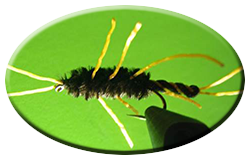
Materials:
The materials required are .025 non lead wire, dark brown antron yarn, amber flex floss, and dark brown chenille. The hook is a size 8 Dai-Riki 280 2XL hopper hook, and it is all tied together with dark brown 6/0 Uni tying thread.
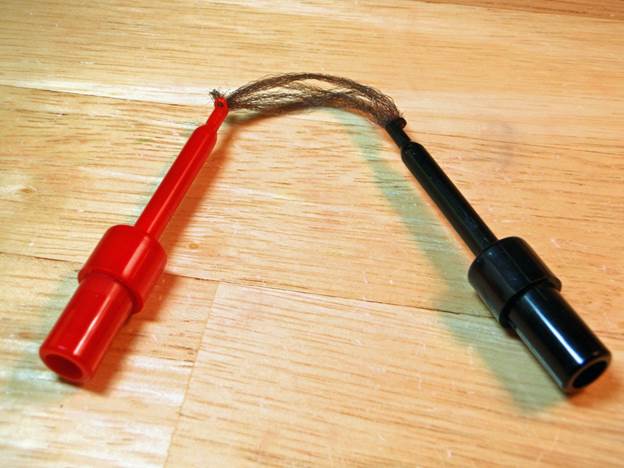
Put ends of three strands of dark brown antron, about 2" long, in clips.

Split strands with bobbin threader.
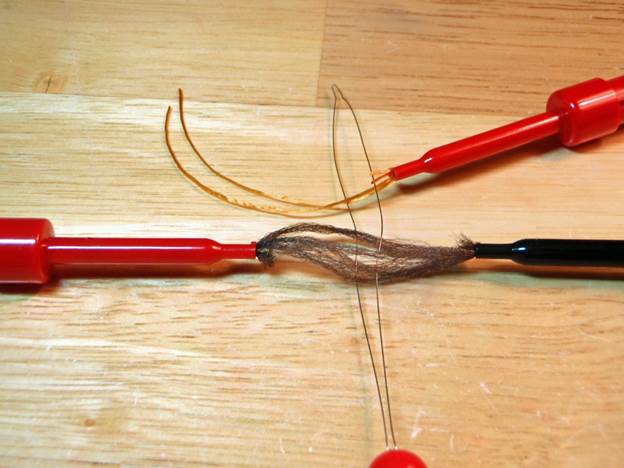
Put ends of two strands of amber flex floss, about 4" long, in clip and run them through the bobbin threader.
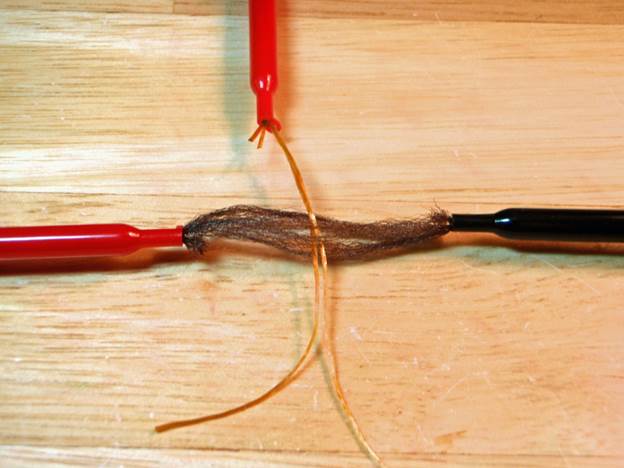
Pull flex floss strands through the antron strands.
Position the flex floss as close to the center of the antron strands as possible, and adjust to a bit longer than the desired finished length. Twist the clips holding the antron in opposite directions until the antron wants to furl back on itself. Holding both clips in one hand, grasp the twisted antron at the point where the flex floss protrudes from the antron and pull and twist in the directon the antron wants to furl while releasing tension on the clips holding the antron.
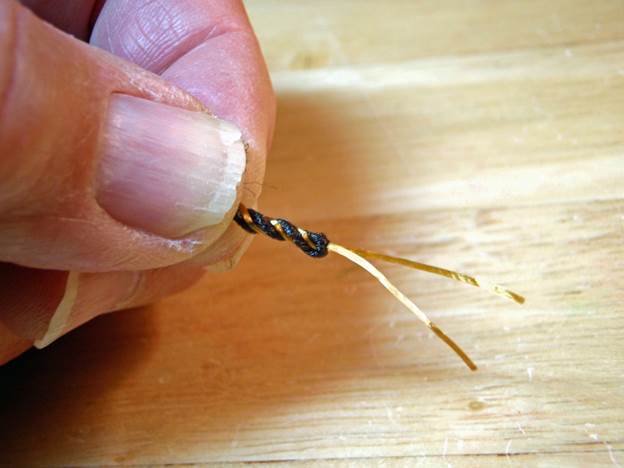
The furled extended body with incorporated tails should look like this.
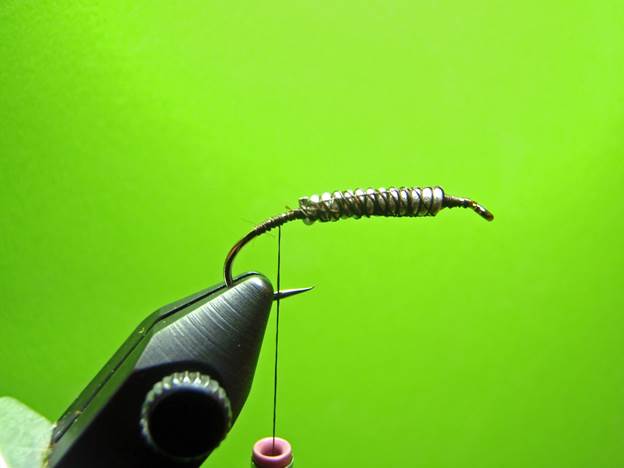
On a size 8 2XL hopper hook, wrap and tie in 12 wraps of .025 non lead wire. (Or more or fewer wraps as needed for creek you will be fishing)
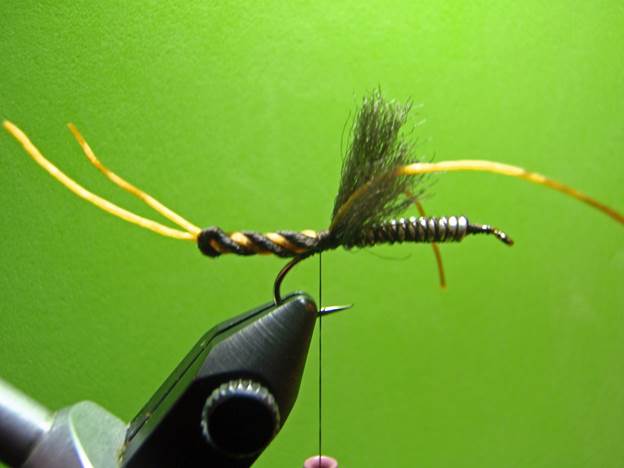
Tie in FEB behind wire wraps, leaving enough room to tie in chenille.
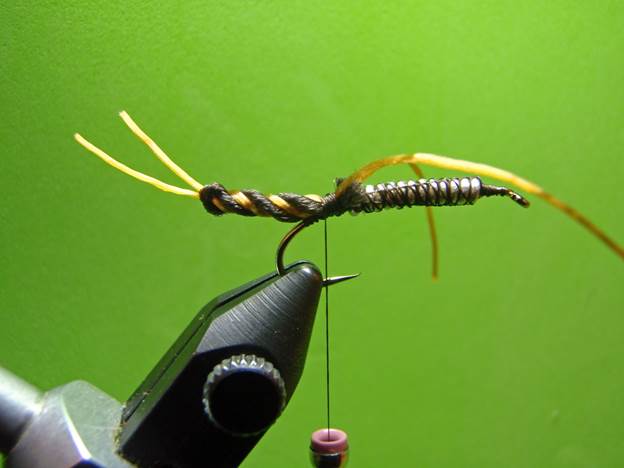
Trim waste antron but not flex floss, which will be tied in as the rear legs.

Wrap the thread forward tying the flex floss along the sides of the shank / wire. Then fold the legs back, pull down and out and wrap the tying thread back to hold them in the desired position.
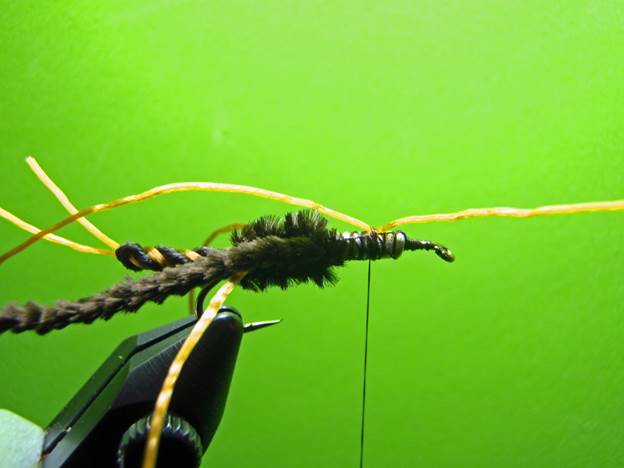
Tie in chenille and then wrap tying thread forward to position where middle legs will be tied in.
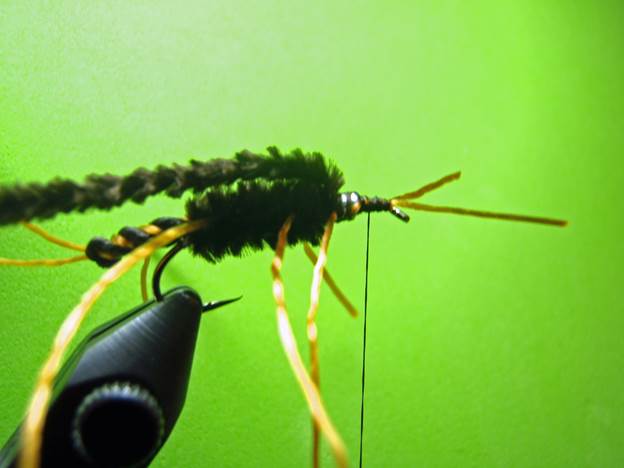
Wrap the chenille forward and take a couple wraps around it with the tying thread. Pull chenille back out of the way; wrap the thread forward several turns. Double a 3" strand of flex floss around the tying thread, take the thread around the hook shank to position the flex floss, and then a couple more turns of thread to secure it in place. Pull the strands of flex floss down and to the sides to position the middle legs and then wrap back over them with tying thread, butting right up against the front of the chenille.

Move the tying thread forward to just behind wire wraps, advance the chenille and secure, and repeat the above process to tie in the front legs. Then move the thread forward of the wire and tie in the antennae using the same basic technique.
Advance the chenille to just behind the antennae tie in point and tie it in. Use a couple five to six turn whip finishes to finish the fly. Trim the legs and antennae to desired length. The rear legs should be somewhat longer than the middle legs which should be longer than the front legs.

Getting used to making the FEB with incorporated tails takes a bit of doing and practice, but once you get the hang of it, it is pretty easy to consistently repeat the process. Especially with larger, stiffer tailing material, you have to twist the FEB tightly as it furls, and then hold the furled extended body tight until you get the tie in started.
Beyond making the FEB, the fly is as simple to tie as the old rubber legged stonefly nymph. There are several tying sequences for that fly, and the above is simply the sequence that I developed as a preference to others that I've used.
For more great info, check out:
Beginning Fly Tying | Intermediate Fly Tying | Advanced Fly Tying.
